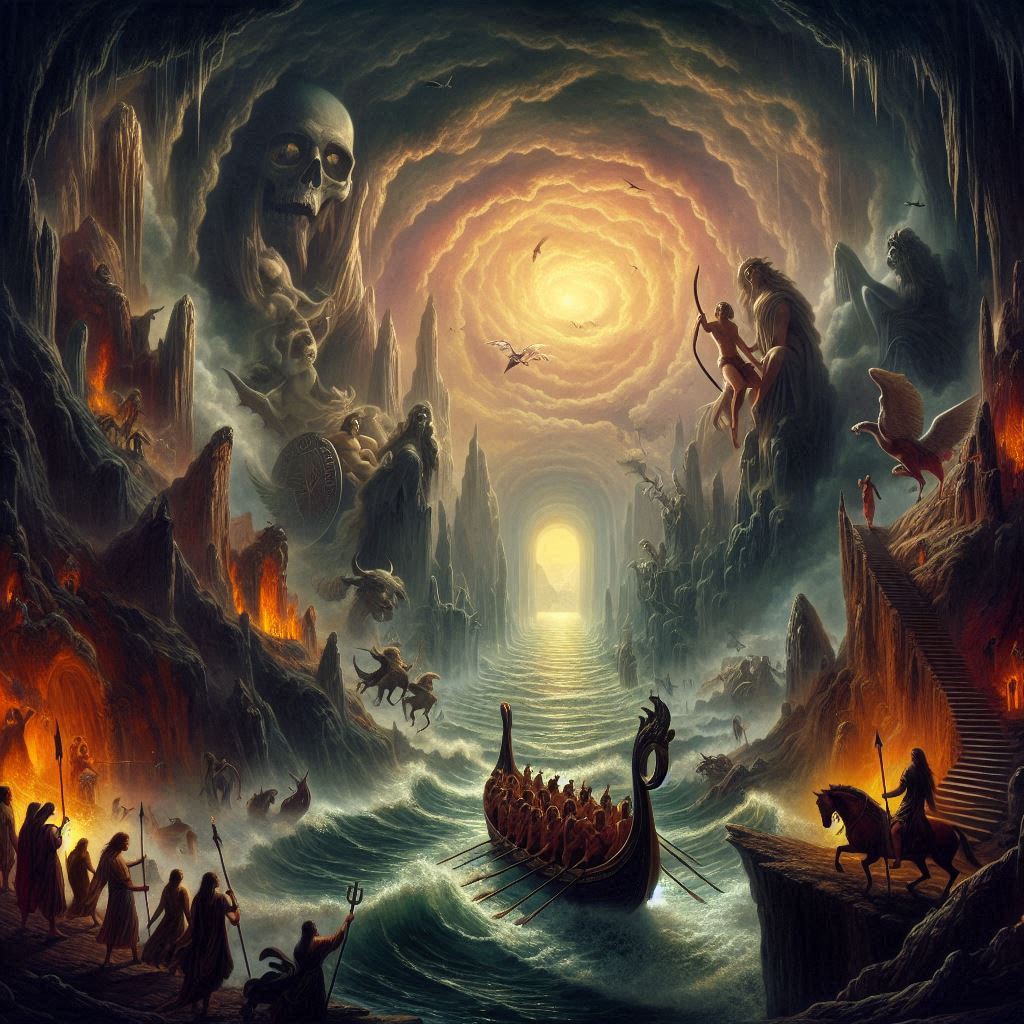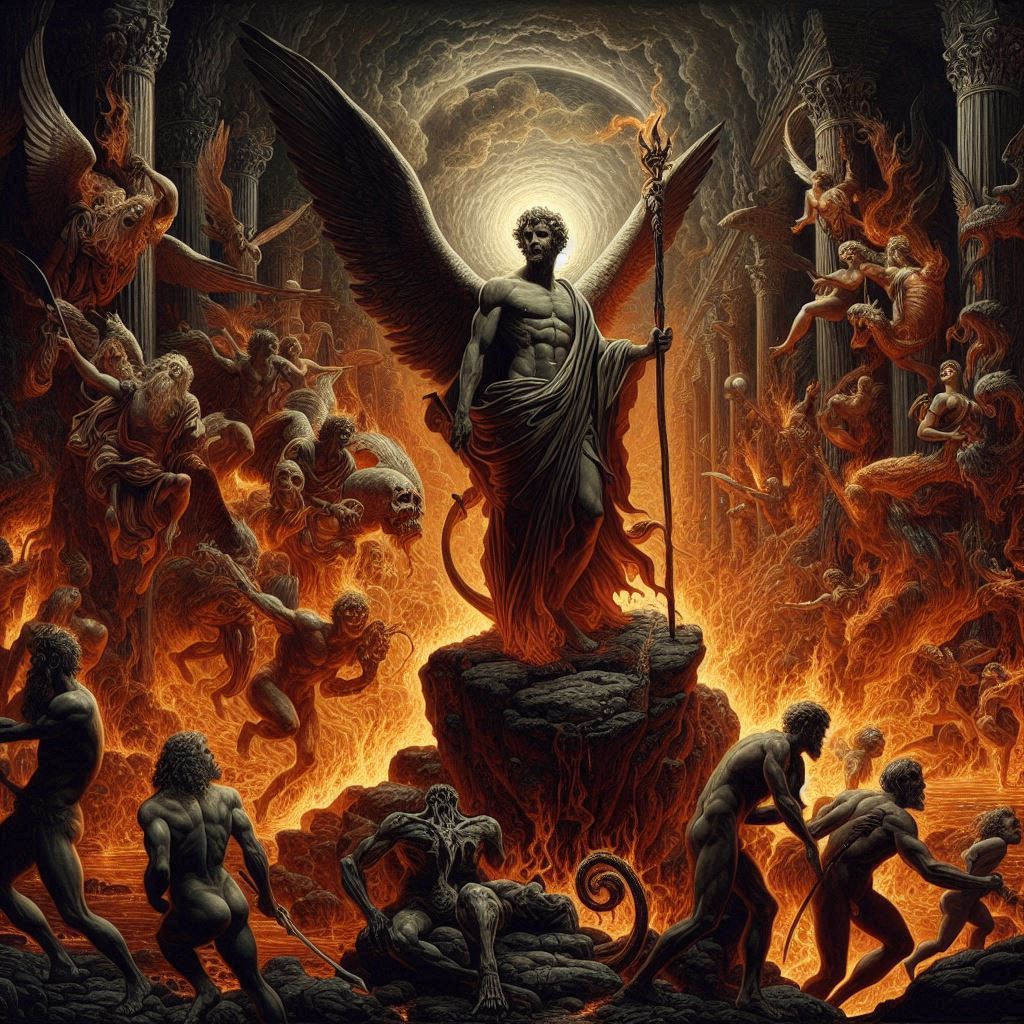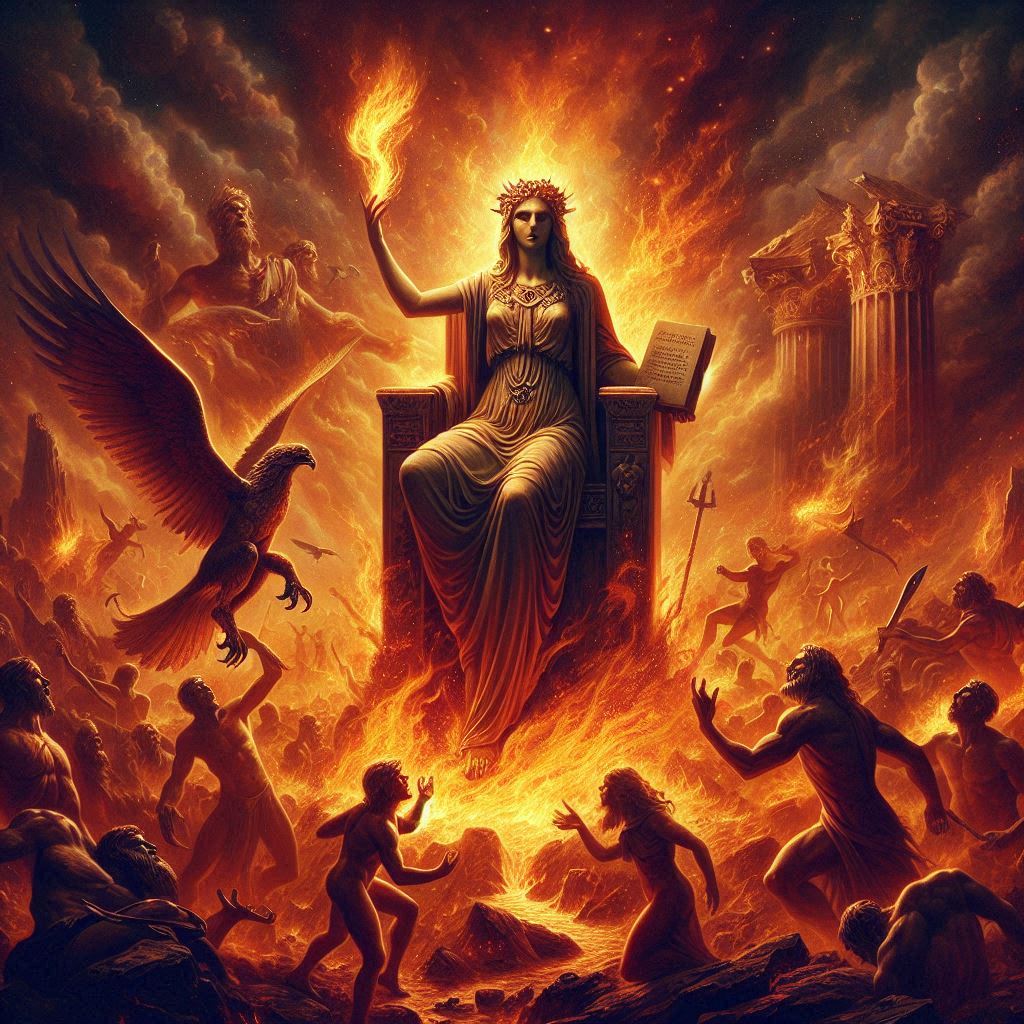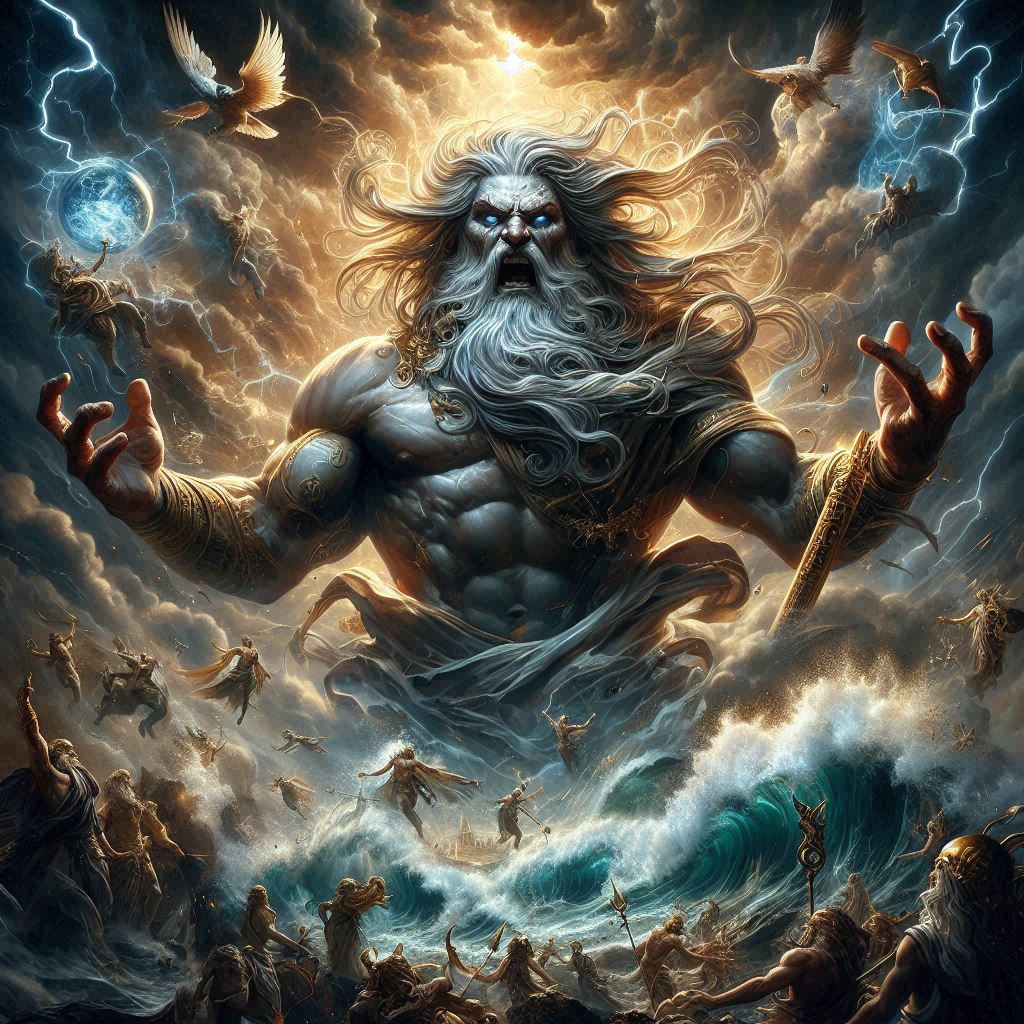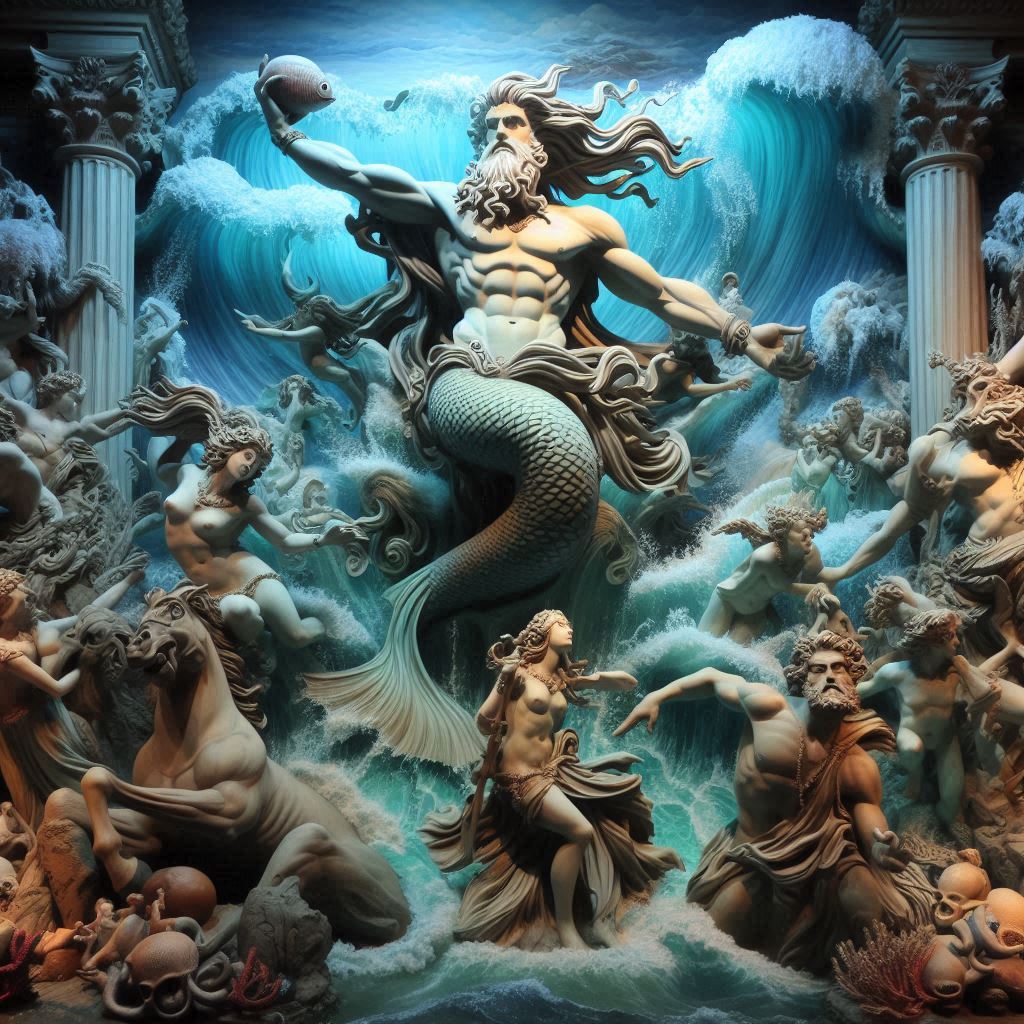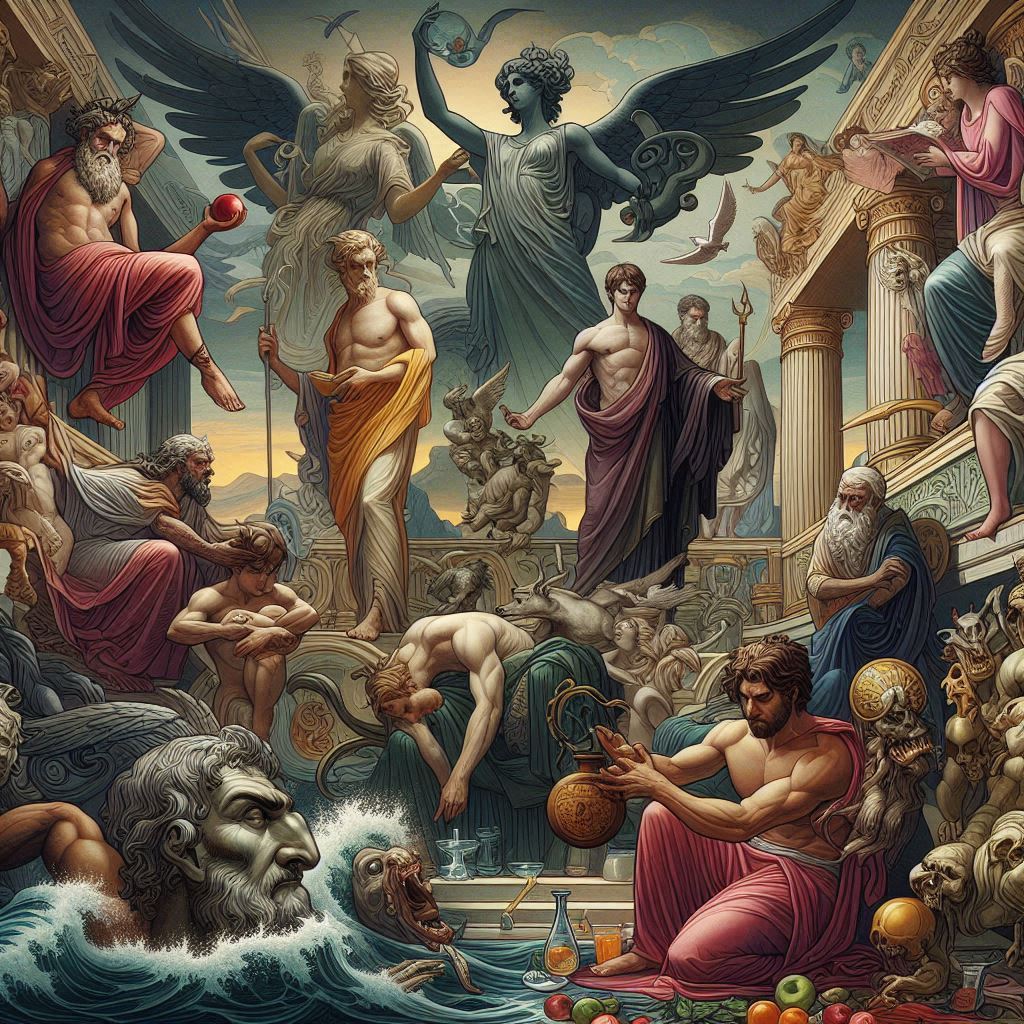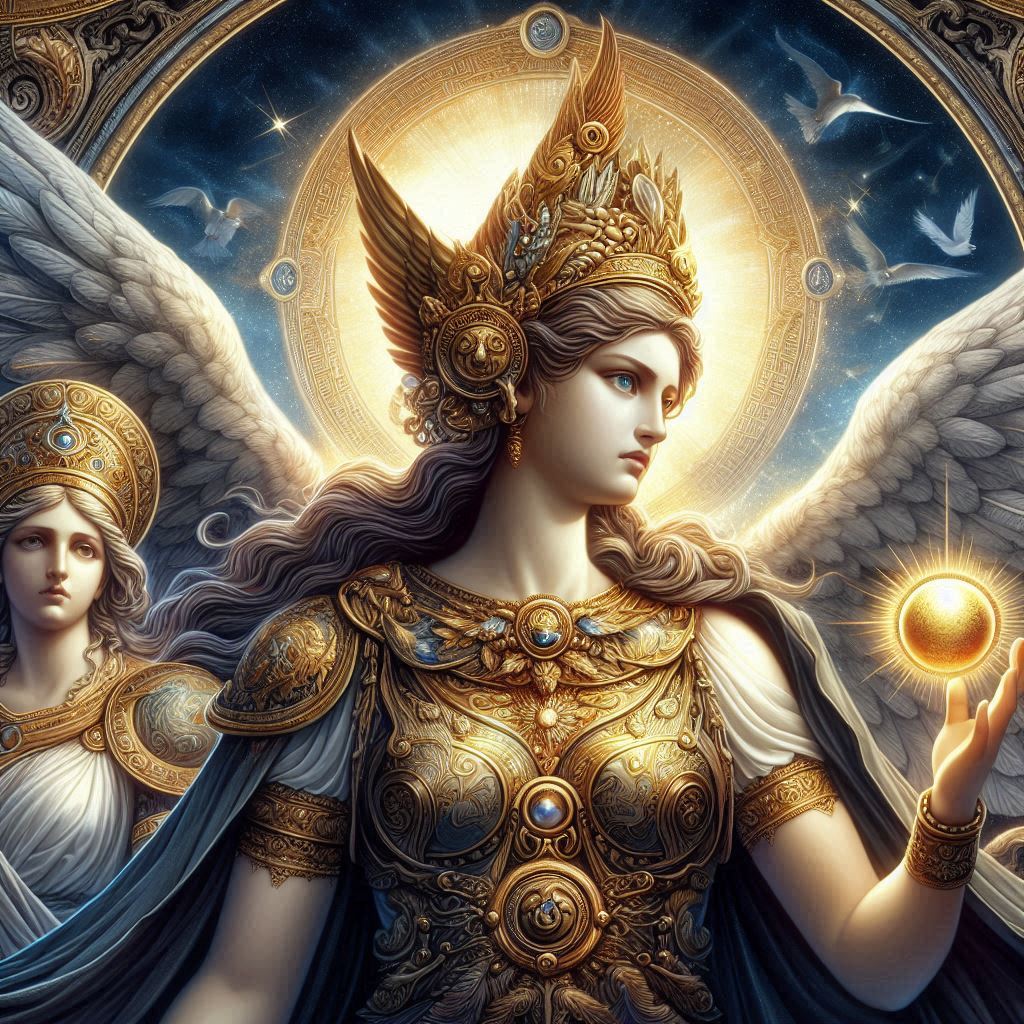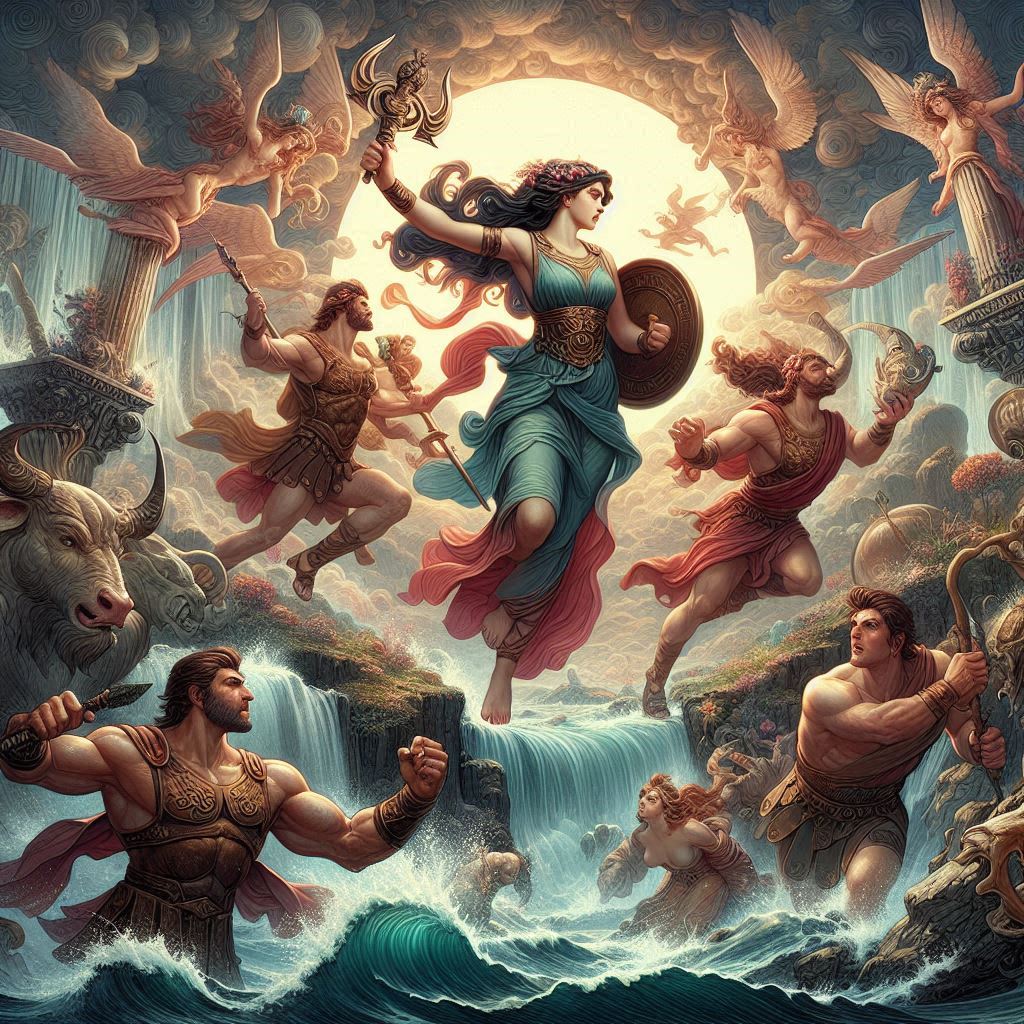The Underworld, often referred to as Hades in Greek mythology, is a realm shrouded in mystery and myth, serving as the realm of the dead and the domain of the god Hades, ruler of the underworld. Journeying to the Underworld is a recurring theme in Greek mythology, with heroes, gods, and mortals venturing into its depths for various reasons, including quests for knowledge, love, redemption, and guidance. The Underworld itself is depicted as a dark and gloomy realm, divided into several regions, each with its own significance and inhabitants. Exploring the mythology and symbolism of the Underworld offers insights into ancient Greek beliefs about death, the afterlife, and the human soul.
The concept of the Underworld in Greek mythology is closely tied to the belief in the immortality of the soul and the idea of an afterlife governed by divine justice. According to myth, when mortals die, their souls are ferried across the river Styx by Charon, the ferryman of the dead, who requires payment in the form of a coin placed under the tongue of the deceased. Those who receive proper burial rites are granted entry into the Underworld, where they are judged and assigned to one of several regions based on their deeds in life.
The Underworld is divided into different realms, each with its own purpose and inhabitants. The first region is the Asphodel Meadows, a neutral and indistinct place where ordinary souls reside, neither rewarded nor punished for their actions in life. The Asphodel Meadows symbolize the mundane and unremarkable nature of everyday existence, where souls wander aimlessly without purpose or distinction.
Beyond the Asphodel Meadows lies the Elysian Fields, a paradise reserved for heroes, demigods, and virtuous souls who lived exemplary lives. The Elysian Fields are depicted as a lush and idyllic realm, where the blessed inhabitants enjoy eternal happiness, peace, and fulfillment. The concept of the Elysian Fields reflects ancient Greek ideals of heroism, virtue, and the rewards of a life well-lived.
Contrasting with the Elysian Fields is Tartarus, the deepest and darkest region of the Underworld, reserved for the punishment of the wicked and the damned. Tartarus is depicted as a place of torment and suffering, where souls endure eternal punishments that correspond to their crimes in life. Famous figures such as Sisyphus, condemned to roll a boulder uphill for eternity, and Tantalus, cursed with eternal hunger and thirst just out of reach, are among the inhabitants of Tartarus, serving as cautionary examples of divine retribution and the consequences of hubris and moral transgressions.
One of the most famous journeys to the Underworld in Greek mythology is that of Orpheus, the legendary musician and poet, who ventures into the realm of Hades to retrieve his beloved wife Eurydice. According to the myth, Eurydice dies from a snake bite shortly after their wedding, prompting Orpheus to descend into the Underworld in a desperate attempt to bring her back to the world of the living.
Armed with his lyre and the power of his music, Orpheus charms and persuades the guardians of the Underworld, including Cerberus, the three-headed hound of Hades, and Charon, the ferryman, to allow him passage. His music also moves Hades and Persephone, the rulers of the Underworld, who agree to grant Orpheus’s request under one condition: he must lead Eurydice out of the Underworld without looking back at her until they have reached the surface.
Tragically, Orpheus fails to resist the temptation to look back at Eurydice as they ascend from the Underworld, violating the terms of his agreement and condemning Eurydice to return to the realm of the dead permanently. The story of Orpheus and Eurydice is a poignant exploration of love, loss, and the limits of mortal agency, highlighting the themes of separation, longing, and the inevitability of death.
Another famous journey to the Underworld is that of Heracles, the legendary hero, who descends into Hades as part of his Twelve Labors. In one of his tasks, Heracles is tasked with capturing Cerberus, the fearsome three-headed hound of Hades, and bringing him to the surface as proof of his accomplishment. Heracles overcomes various obstacles and adversaries in the Underworld, including the river Styx, the guardian Hydra, and the shades of the dead, showcasing his strength, courage, and determination in the face of daunting challenges.
Heracles’s journey to the Underworld represents a symbolic descent into the realm of darkness and death, where he confronts his own mortality and the limits of his power. His successful capture of Cerberus symbolizes his triumph over death and his status as a hero of unparalleled strength and courage.
The myth of Persephone, the queen of the Underworld, also offers insights into the symbolism and significance of the Underworld in Greek mythology. According to the myth, Persephone is abducted by Hades and taken to the Underworld to be his queen, leading to her mother Demeter’s grief and the barrenness of the earth. Demeter, the goddess of agriculture, mourns the loss of her daughter and refuses to let crops grow until Persephone is returned to her.
Zeus, the king of the gods, intervenes and negotiates a compromise with Hades, allowing Persephone to spend part of the year in the world above with her mother and part of the year in the Underworld as Hades’s queen. This mythological explanation for the changing seasons reflects ancient Greek beliefs about the cycle of life, death, and rebirth, as well as the interconnectedness of the natural world and the divine realm.
The symbolism of the Underworld in Greek mythology extends beyond its literal depiction as a realm of the dead; it also represents a metaphorical journey of self-discovery, transformation, and enlightenment. The descent into the Underworld is often associated with initiation rites, spiritual trials, and the quest for hidden knowledge or wisdom. Heroes and mortals who venture into the Underworld undergo profound experiences that challenge their beliefs, test their resolve, and ultimately lead to personal growth and understanding.
